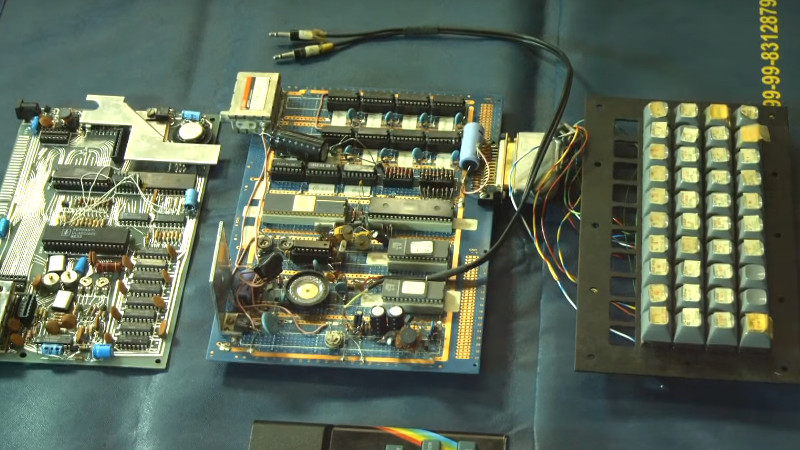The Centre for Computing History in Cambridge, UK, receive many donations from which they can enrich their collection and museum displays. Many are interesting but mundane, but the subject of their latest video is far from that. The wire-wrapped prototype board they reveal with a flourish from beneath a folded antistatic mat is no ordinary computer, because it is the prototype Sinclair ZX Spectrum.
It came to the museum from Nine Tiles, a local consultancy firm that had been contracted by Sinclair Research in the early 1980s to produce the BASIC ROM that would run on the replacement for their popular ZX81 home microcomputer. The write-up and the video we’ve placed below the break give some detail on the history of the ROM project, the pressures from Sinclair’s legendary cost-cutting, and the decision to ship with an unfinished ROM version meaning that later peripherals had to carry shadow ROMs with updated routines.
The board itself is a standard wire-wrap protoboard with all the major Spectrum components there in some form. This is a 16k model, there is no expansion connector, and the layout is back-to-front to that of the final machine. The ULA chip is a pre-production item in a ceramic package, and the keyboard is attached through a D connector. Decent quality key switches make a stark contrast to the rubber keys and membrane that Spectrum owners would later mash to pieces playing Daley Thompson’s Decathlon.
This machine is a remarkable artifact, and we should all be indebted to Nine Tiles for ensuring that it is preserved for those with an interest in computing to study and enjoy. It may not look like much, but that protoboard had a hand in launching a huge number of people’s careers in technology, and we suspect that some of those people will be Hackaday readers. We’ll certainly be dropping in to see it next time we’re in Cambridge.
If you haven’t been to the Centre for Computing History yet, we suggest you take a look at our review from a couple of years ago. And if prototype home computers are your thing, this certainly isn’t the first to grace these pages.















Oh my, what I wouldn’t do to have that it my collection :0
https://my.pcloud.com/publink/show?code=XZMrzq7ZdHxy88Lo4PkvkcG0UFXDcfjc4fpX
In the article it’s described as “The wire-wrapped prototype board” but looking at the photos here and on the Centre for Computer History website it’s clearly soldered? There aren’t any wire wrap pins that I can see?
At 6m15s they flip the board over, and there are wire wrap posts and plenty of wrapped wire.
There’s definitely solder too, a pretty ugly bodgework if you ask me, but of course, they didn’t ask me before releasing the thing, and ultimately I’m glad for that!
Apologies – you are completely right. I was mistaken. It clearly is wire wrapped. I’m a fool
*Put the gloves on*
*proceed to scratch his face*
oh. man.
fascinating stuff! A true historic artifact I fully agree and should be treated with respect and care.
But the rubber gloves in combination with the ESD wristband slightly confused me. And I was shocked (pun intended) to see the other guy (that does not seem to be grounded) poking in it with a screwdriver.
I was confused by that too. I thought that ESD was only a problem with CMOS? The ZX Spectrum would be TTL as this was before CMOS.
“The result of all this unsettled period was that Sinclair launched the Spectrum with an unfinished ROM, Nine Tiles continued to work on it until 3 months after launch, but by then too many machines had shipped, so the new code and this prototype were no longer needed.”
Please publish the updated ROM, I feel a ROM upgrade coming!
Updated ROM could lead to compatibility issues but I guess it would be nice to see if it had additional features.
Anti-static mat & nitrile gloves.
Hmmm.
But does it still work?
And with an orthogonal mechanical keyboard to boot!